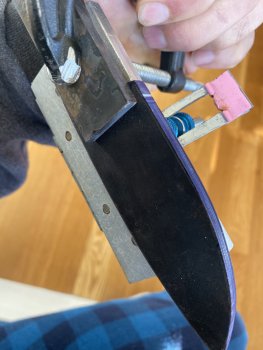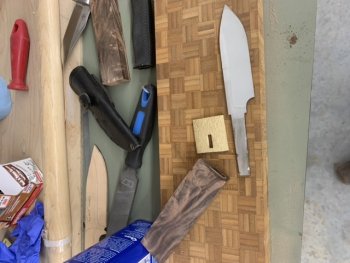I think you're putting the cart before the horse so to speak. Although it MIGHT seem logical to use plunge cuts/lines as a starting point....just the opposite usually works far better. Much depends on how good you personally are with your grinder, but I not only do it, but also teach students to START a very shallow cut, significantly forward or where you wish the plunges to end up. Then through the grinding process, both rough and finish grinding, step the plunges back a bit with each grit. I usually get them to their final location after heat treat, and when I'm at 220 grit...then just touch/clean them up with 400 and 600 before hand finishing.
This is just a guess on my part, but HOW you grind also have a big impact on how well the plunges come out....what I mean...and this is how I teach it. When starting your grinding pass, start by contacting the middle of the blade to the belt. No/minimal pressure, then gently go back to the plunge area, then apply pressure, and make your grinding pass. The repeat, repeat, repeat, until you're where you want to be. The most common thing I see when teaching grinding, is that most do not understand that unless your arms/hands are LOCKED into your body, it's just not gona work. There is not a human on the planet who has the strength/ability to hold a knife blank without "bouncing around"....without the arms/hands locked into the body for support.
Of course, those who use a work rest/jig combination likely don't have that issue, but then those who do are usually locked into a single blade profile.
Personally, if I were going to use, or make a recommendation to use a jig during grinding, it would be to first, leave the plunge forward of where you want it, and finish it during final grinding. AND....if a jig is used..... use a carbide file guide during finish grinding and have it aligned where you want your plunges.



